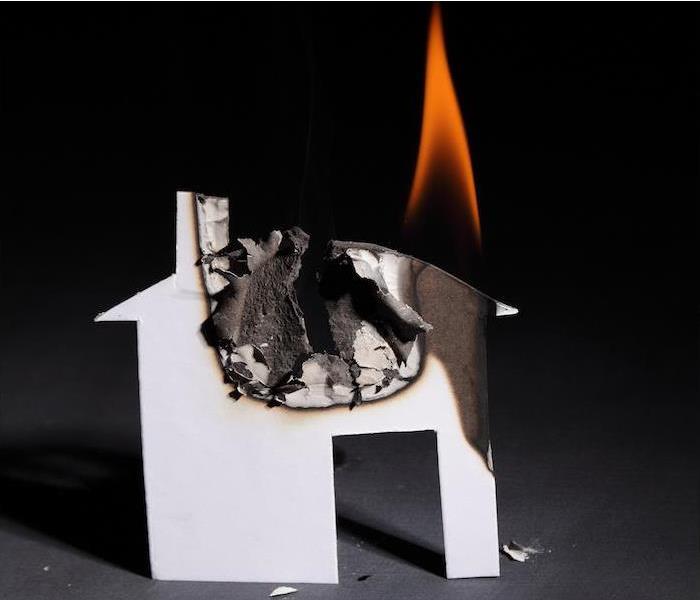What You Need to Start a Fire—or What to Subtract to End One
1/21/2022 (Permalink)
What is a tetrahedron? Well the short version is that it is a three-dimensional, triangular shape with four equal sides. OK, so now you know about the geometric shape, but why are we talking about it in a fire restoration blog? Well, there’s also something called a fire tetrahedron.
The term is a way of expressing that there are four components needed to start a fire—and without any of those four components (or “sides”), the fire will stop.
The 4 Things a Fire Needs to Live
Fuel. Just like anything in life, a fire has to have fuel in order to keep going. You’re probably most familiar with starting a fire using wood, but nearly anything, organic or inorganic, can fuel a fire.
Heat. As we all know, fire produces heat, but did you know that heat is required for a fire to start in the first place? Every object has a set temperature at which it will combust, resulting in the object melting or igniting.
Oxygen. Fire reacts with oxygen to produce a series of chemical reactions. In short, oxygen feeds the fire so that it can keep growing and generate products of combustion in the process.
Chemical Chain Reaction. The cycle of heat, fuel and oxygen combined produce a chain reaction. The fire will keep going as long as the chain reaction is undisturbed.
The 4 Ways to Stop a Fire
Cool it. When you think about how to put out a fire, water probably comes to mind. Dousing a fire in water is the most common way to put one out, but anything that cools the internal temperature of the fire will eventually extinguish it.
Smother it. Were you taught to “stop, drop and roll” in elementary school? This motto helps us remember what to do if our clothing catches on fire—and it also shows this method of stopping a fire. Fire requires oxygen, so when you lie down and smoosh your clothing into the ground, you starve the fire of the oxygen it needs. It will eventually die.
Starve it. A fire burns so long as it has the adequate fuel, whether grass, wood or other materials. You can be proactive in starving a fire by removing the fire’s fuel source while it’s still trying to burn.
Interrupt the chain reaction. Chemical agents can help put a stop to a fire because it will chemically disrupt the reaction that multiplies to keep a fire burning. Halon is a particularly effective chemical agent for this, but it has an elevated potential for ozone depletion, making it an environmental threat.





 24/7 Emergency Service
24/7 Emergency Service
